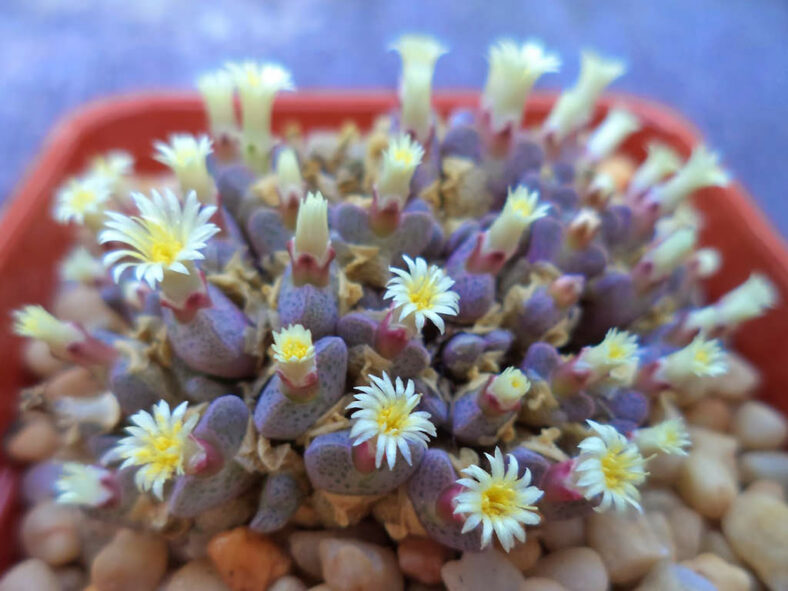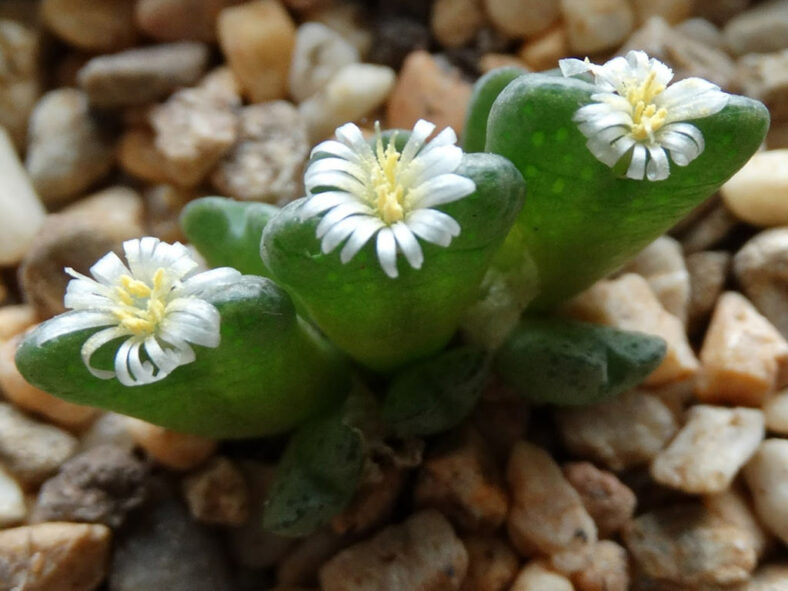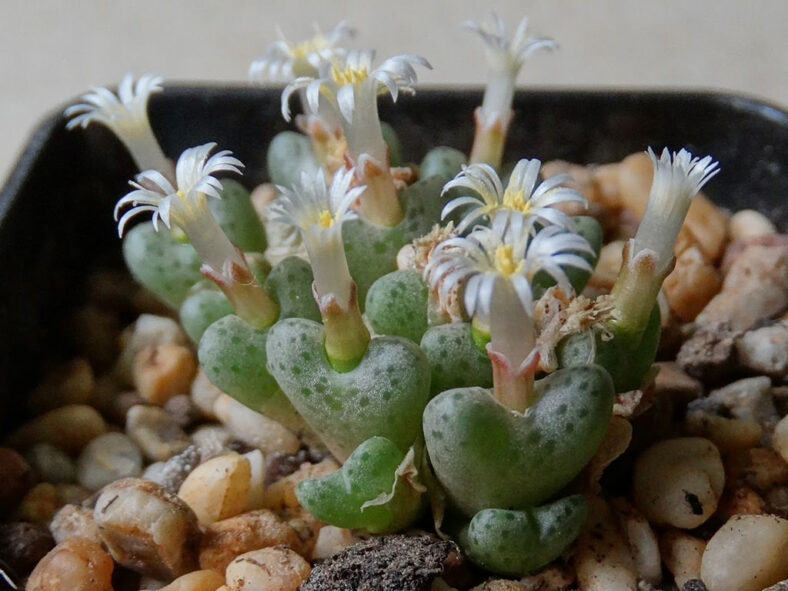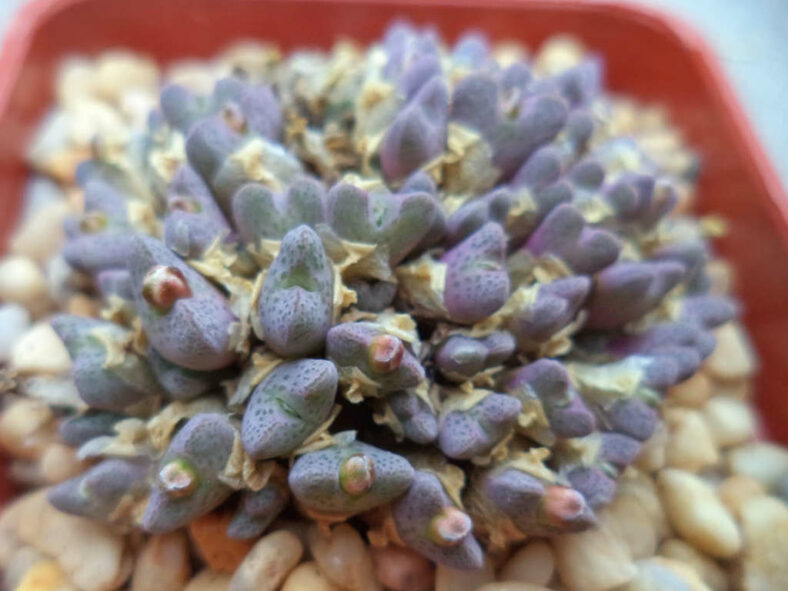Conophytum carpianum is typically grown in containers where it spreads slowly, making it ideal for growers with limited space.
Scientific Name
Conophytum carpianum L.Bolus
Scientific Classification
Family: Aizoaceae
Subfamily: Ruschioideae
Tribe: Ruschieae
Genus: Conophytum
Etymology
The specific epithet "carpianum" (pronounced "kar-pee-AY-num") honors Bernard Carp (1901-1966), naturalist, nurseryman, and plant explorer in South Africa.
Origin
Conophytum carpianum is native to South Africa. It occurs in damp gneiss cliffs with lichens in a small part of the Northern Cape province, where it is found only in two locations.
Description
Conophytum carpianum is a dwarf succulent that forms clumps of wedge-shaped bodies consisting of two opposite, almost completely fused leaves. The bodies are sharply keeled, shortly bilobed, and can grow up to 0.4 inches (1 cm) tall and 0.25 inches (0.6 cm) in diameter. They are pale grey, spotted, and minutely papillate. When exposed to intense sunlight, the bodies can take on a pink hue.
During the fall and early winter, Conophytum carpianum produces fragrant, cream-colored flowers that open at night.

How to Grow and Care for Conophytum carpianum
Light: This plant thrives in bright light but should be protected from intensive direct sunlight. To avoid sunburn, place it in an area where it can receive a few hours of full sun during the cooler parts of the day.
Soil: For optimum growth, Conophytum carpianum requires porous soil that allows water to drain away quickly. You can use a commercial potting mix designed for succulents or make your own.
Temperature: High temperatures are not a problem for this plant, but it is not frost-hardy. It grows best in USDA Plant Hardiness Zones 10b to 11b, with average minimum winter temperatures ranging from 35 to 50 °F (1.7 to 10 °C).
Watering: Conophytum carpianum requires little or no water during its dormancy from spring to summer. When it begins to grow again in the fall, it is safe to water it deeply. However, ensure that the soil dries out between waterings. If the leaves begin to wrinkle during the active growth period, it may be a sign that additional water is needed.
Fertilizing: This plant is a light feeder and does not need fertilizer if repotted every two years.
Repotting: The best time to repot this plant is at the beginning of the growing season. However, repotting can also be done at any point during active growth.
Propagation: Conophytum carpianum is usually propagated from seeds but can also be easily propagated by division. The ideal time to divide the plant is before it starts to break dormancy or after flowering.
Learn more at How to Grow and Care for Conophytum.
Toxicity of Conophytum carpianum
Conophytum carpianum is considered non-toxic, so growing around children and pets is safe.
Links
- Back to genus Conophytum
- Succupedia: Browse succulents by Scientific Name, Common Name, Genus, Family, USDA Hardiness Zone, Origin, or cacti by Genus
Photo Gallery
Click on a photo to see a larger version.


